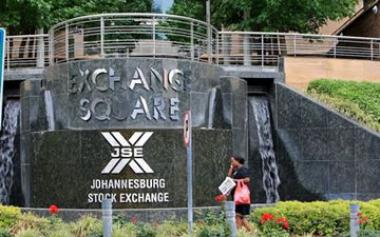Market volatility dampens Listed Property Sector
 Movements in bond yields, the rand and inflation rates uncertainty continue to dampen the listed property sector, with the South African listed-property index (FTSE-JSE Sapy index) losing 16% last month.
Movements in bond yields, the rand and inflation rates uncertainty continue to dampen the listed property sector, with the South African listed-property index (FTSE-JSE Sapy index) losing 16% last month.
Movements in bond yields, the rand and inflation rates uncertainty continue to dampen the listed property sector, with the South African listed-property index (FTSE-JSE Sapy index) losing 16% last month.
The uncharacteristically volatile listed property market over the past two weeks can be largely explained by movements in bond yields and the rand‚ and given the market’s close correlation to bonds‚ analysts say it may remain volatile over the short term.
After a dramatic two-week slide in listed property prices‚ the sector rallied significantly on Tuesday‚ although some of these gains were lost on Wednesday. At the front line of the volatility has been the larger‚ more liquid stocks that can change hands quicker.
The South African listed-property index (FTSE-JSE Sapy index) has declined by 16% from its peak just over two weeks ago on May 20.
The last week of May’s 8.94% decline in listed property prices “was the biggest move that the sector has ever seen in a week‚ since we have followed the property index from 2002”‚ according to Alternative Real Estate fund manager Maurice Shapiro.
Shapiro says listed property “has been tracking bond yields extremely closely” and is therefore‚ relative to bond yields‚ unchanged in price compared with the sector’s peak on May 20.
“It has been a global interest rate move rather than a South African property fundamental move.”
The sector’s strong rally on Tuesday was due to a strengthening rand which bolstered and “stabilised bond yields”‚ he says.
US Federal Reserve chairman Ben Bernanke said on May 20‚ at the peak of the South African listed property market‚ that the US Federal Reserve would reduce its monthly bond-buying in response to gains in the labour market.
Shapiro says this led to a sharp rise in US bond yields‚ which reduced the attractiveness of riskier emerging market investments given decent returns on US bonds. This‚ along with negative sentiment in SA as well as interest rates remaining unchanged and a weakening rand‚ contributed to a weaker SA bond market.
On Monday‚ the rand strengthened and bond yields “started to recover” while listed property prices continued to tumble — leading to a “disconnect” between bonds and property.
“So then property was on the safer side of cheap relative to bond yields on a long-term basis.”
Property was more evenly priced relative to bonds after the sector’s strong rally on Tuesday‚ he says.
Shapiro says while many analysts see the sector’s significant price decline as a chance to buy‚ “I don’t believe it’s that much more of a buying opportunity than two or three weeks ago‚ relative to bonds”.
Over the long term‚ bond yields are expected to remain “lower for longer”‚ which is positive for listed property.
Also‚ Shapiro says local property fundamentals “are in a far better place than they were in mid-2009 when vacancies in the office space were much worse and the banks weren’t lending”.
“The actual quality of underlying properties is now much better — the underlying assets have improved substantially in the sector over the past few years‚ yet the differential between bond yields today and in 2009 is exactly the same.”
While the JSE’s larger property companies such as Growthpoint Properties may have seen foreign investor sell-offs‚ these companies’ conversion to real estate investment trusts in the coming months will see foreign inflows returning.
Grindrod Asset Management chief investment officer Ian Anderson says last week’s price action resulted in the yields on listed property increasing to almost 7% from less than 6% two weeks ago.
“This represents an attractive entry point for investors looking to secure a high initial income yield and long-term inflation-beating income and capital growth. However‚ the sector may remain volatile in the short term and will react to shifts in the value of the rand and bond yields‚” Anderson says.
Stanlib investment analyst Ndabe Mkhize says the sell-off was “grossly overdone”‚ with underlying property fundamentals remaining strong.
Mkhize says the most recent examples illustrating the sector’s fundamentals were Vunani Property Investment Fund’s and Resilient Property Income Fund’s trading statements‚ wherein the companies expected distribution growth of more than 15% and 12% for the six months ended June‚ respectively.
Furthermore‚ “other companies are growing in excess of 7%”.
During the sell-off period‚ the bond market and the rand had performed poorly‚ “and some large investors were rearranging their books and therefore needed to sell down immediately”.
With the adjustments having taken place‚ investors were returning to the market on Tuesday. Mkhize says “there’s no way that companies like Hyprop and Growthpoint should have been trading at the yields that they were trading at”.
“Therefore‚ investors with a long-term perspective and a cash pile‚ would do well to buy these high-quality companies at these low prices.”
Mkhize says that in times of “panic selling”‚ companies which are the most liquid are sold quicker. These stocks have large market capitalisations and are the “first ones to feel the pinch”‚ meaning the smaller stocks are more shielded from the sell off.


















